Sourdough Bread Hydration | What you need to know
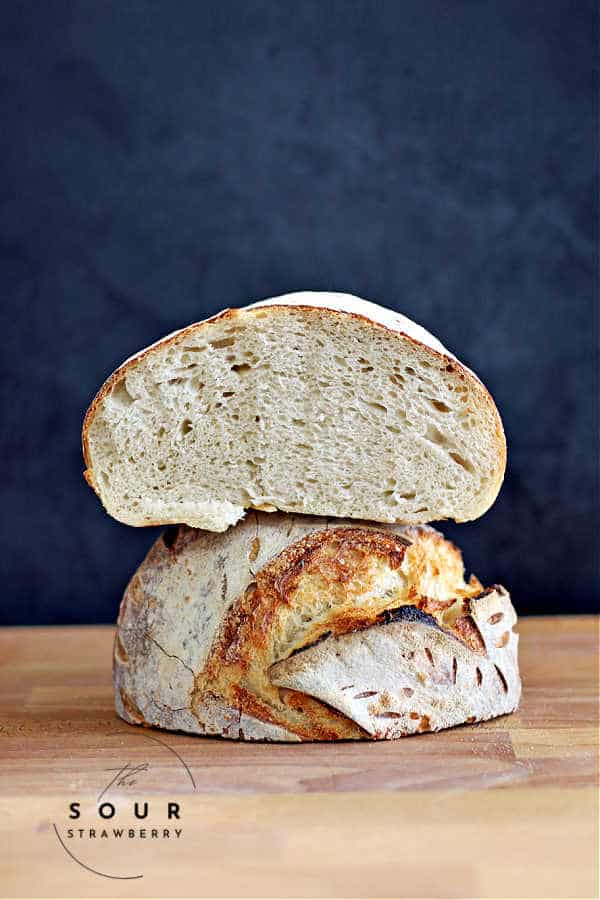
If you are just starting your sourdough journey you are probably a little confused about sourdough terminology, and, in particular, Sourdough Hydration. What is it? What does it mean? In this post, I’ll answer those questions, explain how you calculate it, and describe what it can do for your sourdough bread.
Visit my Sourdough Terminology page to help answer some of the other questions.
Starting sourdough can be confusing. There are so many tools and terms you need to be familiar with, and hydration is one of them.
Understanding hydration and the different terms can help you troubleshoot issues that may arise and help you become a pro sourdough baker.
Hydration levels can influence the texture, flavor and how your sourdough behaves and bakes.
My Easy Beginner Sourdough Recipe is 65% hydration. It’s not too sticky, so it’s easy to work with. The dough has smaller holes, so it’s excellent for adding toppings or making sandwiches. It bakes up perfectly every time. That’s what you want with a beginner loaf: success, the feeling of accomplishment, that you can do this.
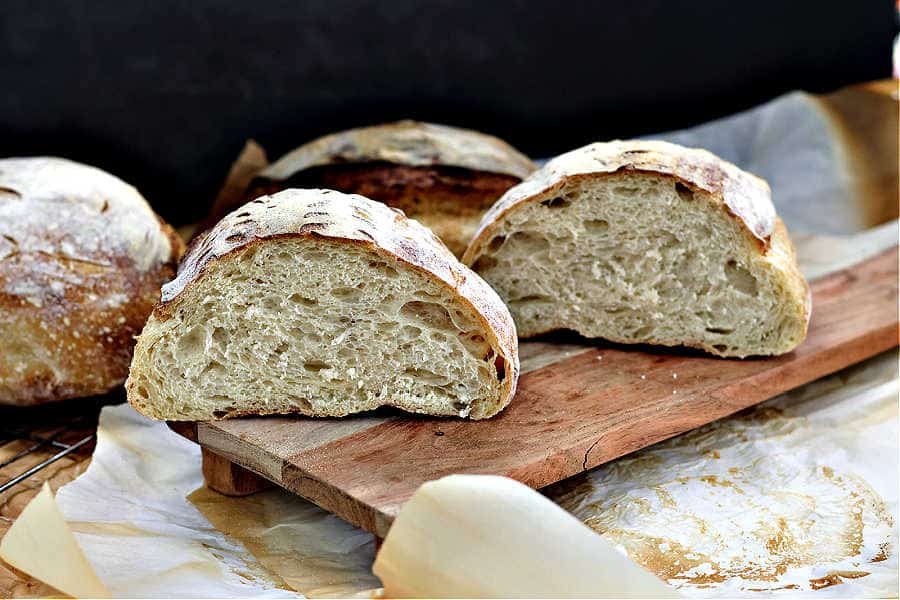
What is Sourdough Hydration?
Sourdough Hydration is the ratio of how much water to grams of flour in your dough. When explained, it’s usually expressed in a percentage ratio and in grams.
Example:
A recipe calls for 500 grams of flour and 350 grams of water.
The hydration level is 70%
(350 ÷ 500 x 100 = percentage)
Here is a graph I created if you don’t like doing baker’s math, LOL
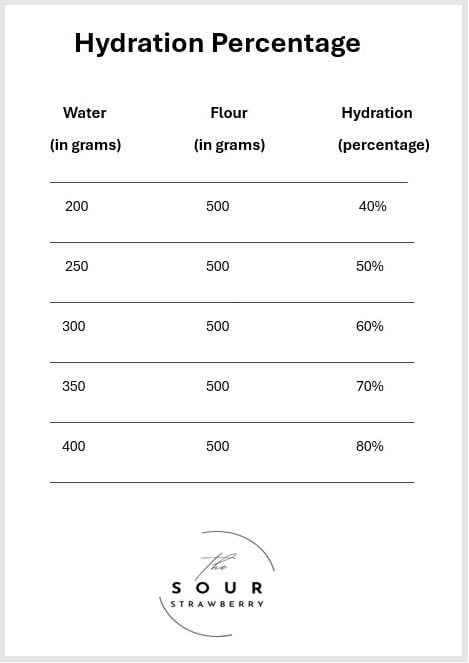
Why is Sourdough Hydration Important?
With as few as four ingredients in sourdough bread, each one is important. The water-to-flour ratio may be the most important.
Handling:
- High-hydration doughs are sticky and a little bit more difficult to work with.
- Lower-hydration doughs are firmer and easier to shape.
Texture:
- Higher-hydration doughs have a more open crumb structure with larger holes, like in artisan breads.
- Lower-hydration doughs have a denser, more uniform crumb, think sandwich bread.
Crust:
- Higher-hydration sourdough bread usually has a thinner crispier crust.
- Lower-hydration doughs result in a thicker chewier crust.
Flavor:
Higher-hydration: more water results in a longer fermentation period, thus a more pronounced sour flavor.- However, you can also leave a lower-hydration dough in the fridge for an extended fermentation period to attain a more sour flavor.
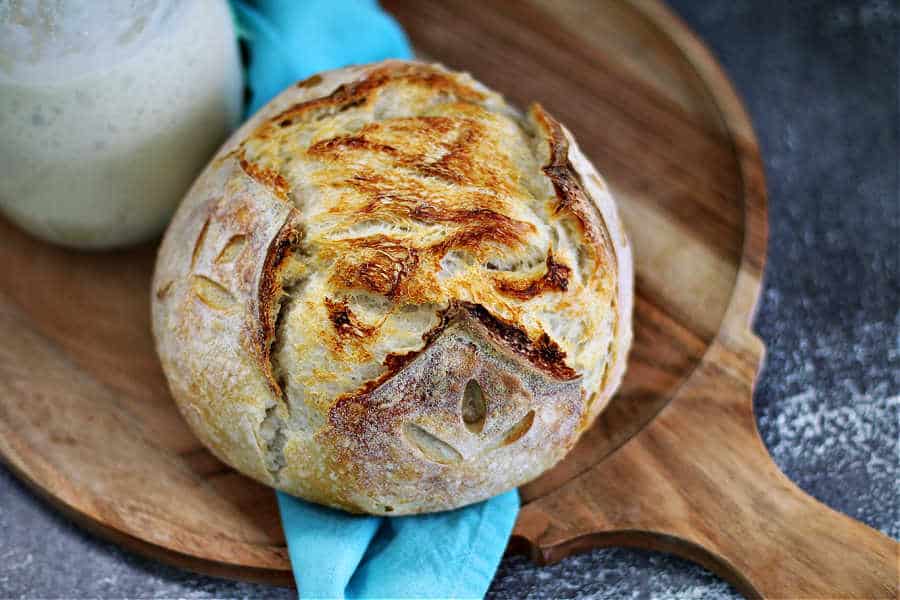
What Percent of Hydration is Best for Which Type of Bread?
Lower-hydration (50 – 60%) – lower-hydration dough is ideal for structured breads such as sandwich bread. These doughs are easier to shape and handle. The crumb is tighter without the large holes for your jam to fall through, haha.
Medium-hydration (60 – 70%) – is your typical everyday sourdough bake. It offers a balance of handling and crumb structure, with a few more air bubbles and a more open crumb.
High-hydration (70 – 80%) – higher-hydration dough is used for doughs like sourdough focaccia and ciabatta breads. This results in a very open crumb and doesn’t require a lot of handling. This wetter dough is very sticky and hard to manage.
All that explained, it’s a personal preference. Play around with the hydration in your sourdough recipes to determine what you and your family love.
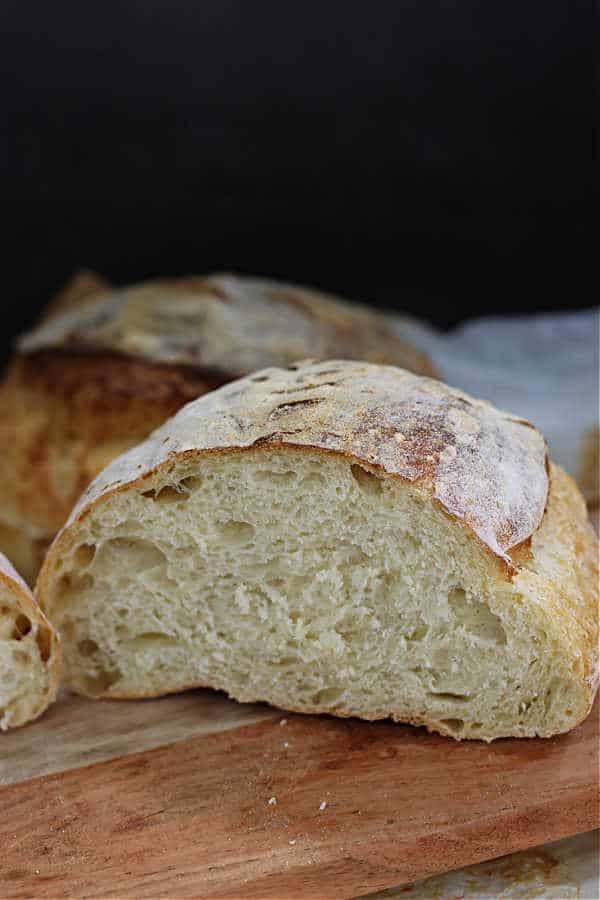
Hydration in Your Sourdough Starter:
Once you have made your own Sourdough Starter, hydration is also important in the maintenance of it.
100% Hydration Starter:
When I started my sourdough journey, I liked to keep my starter 100% hydrated. That means I fed it equal parts water, flour, and starter. This is also easy to remember as a beginner.
Example: 100g starter, 100g water, 100g flour
This usually results in a batter like consistency with a good mixture of yeast and wild bacteria. My bread usually rises within about 6 – 8 hours, depending on the temperature in my kitchen. It rises slower in winter and faster in the warmer summer months.
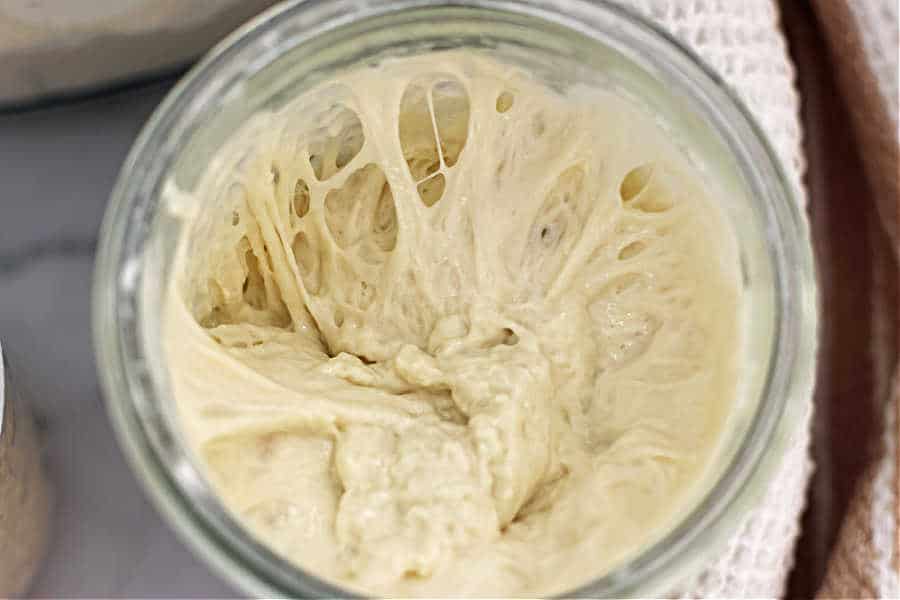
Lower-hydration Starter:
Also known as Stiff Starter, you lower the amount of water at feeding time This is my current starter feeding, as we like the bread’s stronger sour flavor.
Example: 100g starter, 80g water, 100g flour.
This results in a thicker dough-like consistency which automatically results in a strong sour flavor because the bulk fermentation period will take longer. This starter also takes a bit more mixing when you are making your dough as it’s so stiff.
Experiment with this to see which results you like best and what takes you to the next level of your sourdough banking journey.
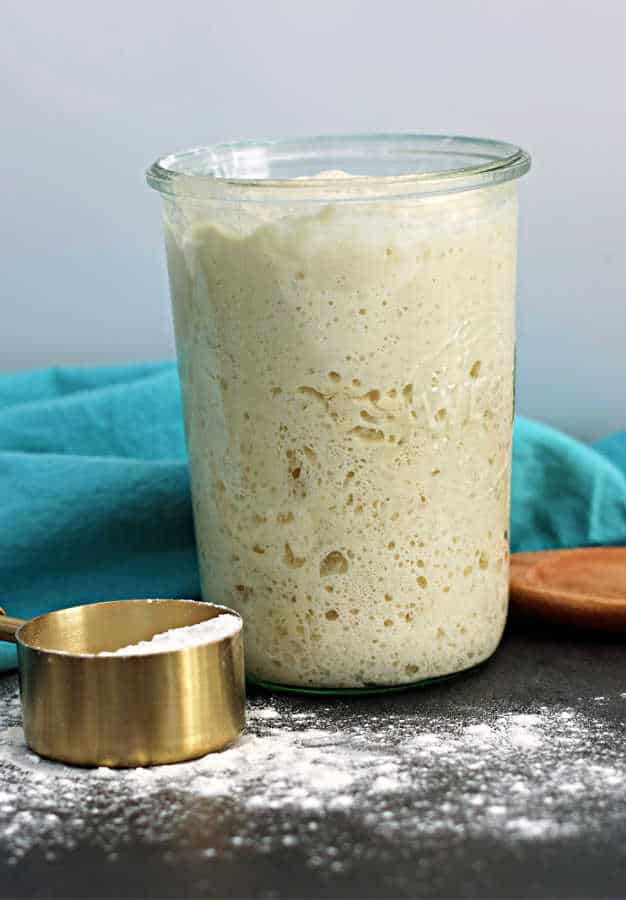
How to Adjust Hydration in Your Bread?
To adjust the different hydration levels in your sourdough bread, you simply change the amount of water you add to the flour.
If you want to increase the hydration add more water. Start with small amounts like 20g. Mix it in well with your starter and finish your dough-making process. When I started, I kept a diary where I wrote about these experiments and the results, along with my opinions of my likes and dislikes of the finished bread. This helped me hone in on our favorites. I still use this diary – now for inclusions – but it’s fun to read back and see how far I have come as a baker.
To decrease the hydration, use less water. Start with 20g less, again mixing it in with your starter and completing your dough-making process. Track what you like and don’t like about it. The dough is drier, easier to stretch and fold, has a tighter crumb, fewer big holes, chewier crust, etc.
Note: When I first started sourdough, the recipe I used had 280g water, 500g flour, 100g starter and 10g salt. I played with this recipe for months until I got to my Easy Beginner Sourdough Bread Recipe, which now has 325g water, 500g flour, 150g starter and 10g salt. This combination results in a easy-to-manage dough, a beautifully textured finished loaf with a medium sour flavor and most importantly, great results each and every time.
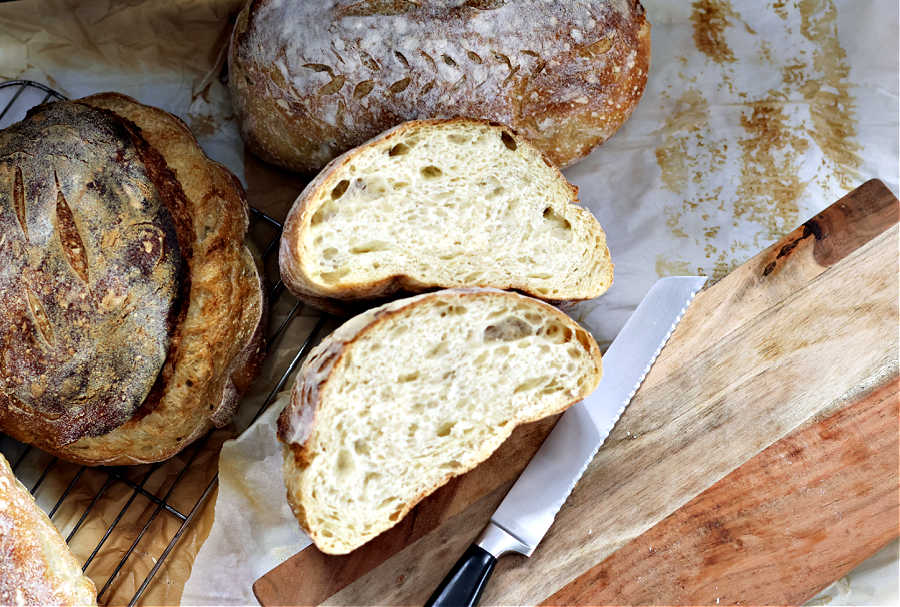
How Flours Affect Sourdough Bread Hydration:
The type of flour you use to bake as well as the amount of flour can also have an affect on your sourdough bread hydration:
All-Purpose Flour: – All-purpose flour has a lower protein content (10 – 12%), therefore, it doesn’t require as much water as bread flour. Usually, 60 – 70% hydration is adequate. Bread made with all-purpose flour is typically a bit denser. This flour and hydration level is perfect for beginners as it’s easy to manage with good solid results.
Bread Flour: – Bread flour has a higher protein content (12 – 14%). It’s great for gluten development and soaking up water. This requires a medium to high hydration level; somewhere between 65% and 70% is good. Dough made with bread flour is lighter and more stretchy. It’s a little harder to handle, but worth the effort.
For Artisan Sourdough Boules, try a hydration level of around 65 – 70%. If you want those big airy holes, push it to 70 – 80%, BUT, be prepared for a much stickier dough that is a bit more difficult to handle. Using wet hands during the stretch and folds really helps at this level. I also lightly flour my work surface with white rice flour when I’m shaping this dough. Make sure your banneton basket is well-floured, so you can get it out again, haha.
Whole Wheat Flour: – Whole wheat flour has super high protein and fiber and absorbs a lot of water. It requires a hydration level of 75 – 80% to keep the dough manageable. Dough made with whole wheat flour is much denser and way less stretchy. It often requires a longer fermentation time and extra water for a workable consistency. If you want a lighter crumb and better rise with this flour, go to 80 – 85% hydration.
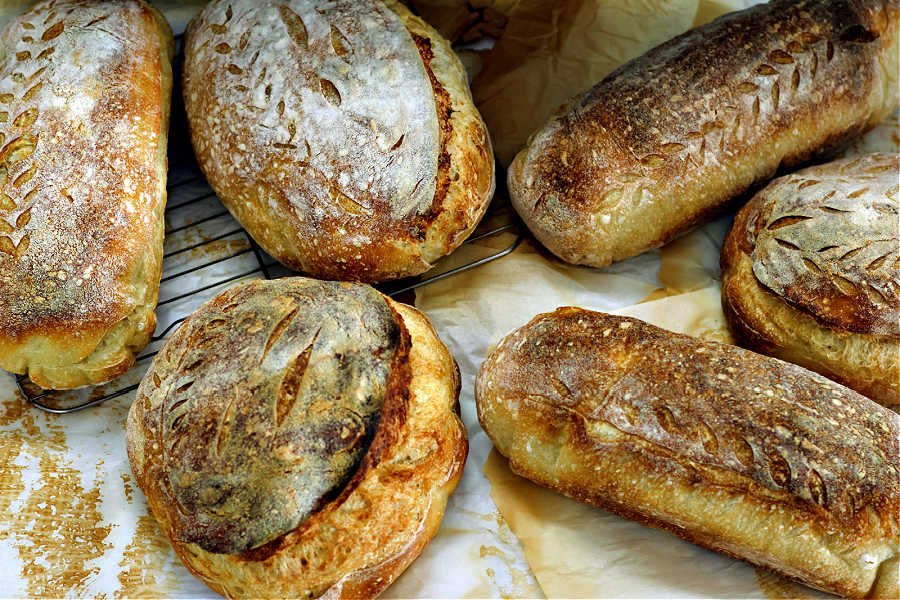
Frequently asked Sourdough Bread Hydration Questions:
Q: What is the best hydration level for beginners?
A: In my experience, it’s around 60 – 65% – which is my Easy Beginner Sourdough Bread Recipe. It’s the easiest to mix, to stretch and fold and to shape.
Q: What are the benefits of low hydration compared to high hydration in sourdough Bread?
A: again, it’s firmer and easier to handle. It also bakes to a tighter crumb. I’m not one of those bakers who wants to attain the large holes and airy crumb in my sourdough bread because I hate it when my butter or jam drips through, LOL, but hey, each to their own.
Q: – is 80% Hydration too much for Sourdough?
A: – A wetter dough is more challenging to work with and can be very temperamental. If you are a beginner, I would suggest starting with a lower hydration and working your way up. Or, go for it and see how you like it, LOL.
Additional Helpful Pages:
How to create a Sourdough Starter
Easy Beginner Sourdough Bread Recipe
Visit my Amazon page, where I list the products I love to use in my kitchen:
Compensated affiliate links used were available at no cost to you. View my Disclosure Page here:


- Follow me on INSTAGRAM
- Find me on FACEBOOK
- Subscribe to my YOUTUBE CHANNEL
- Pin my latest recipes on PINTEREST

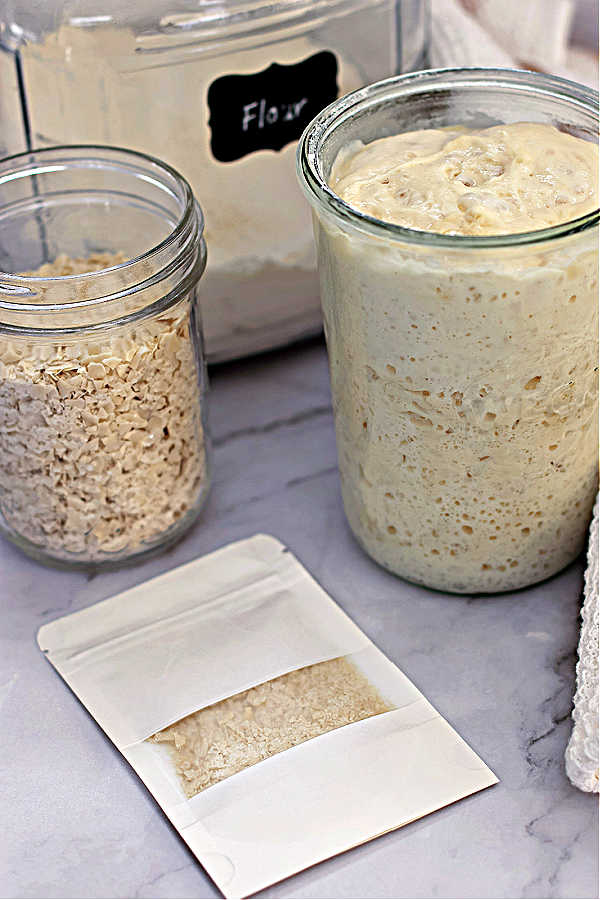
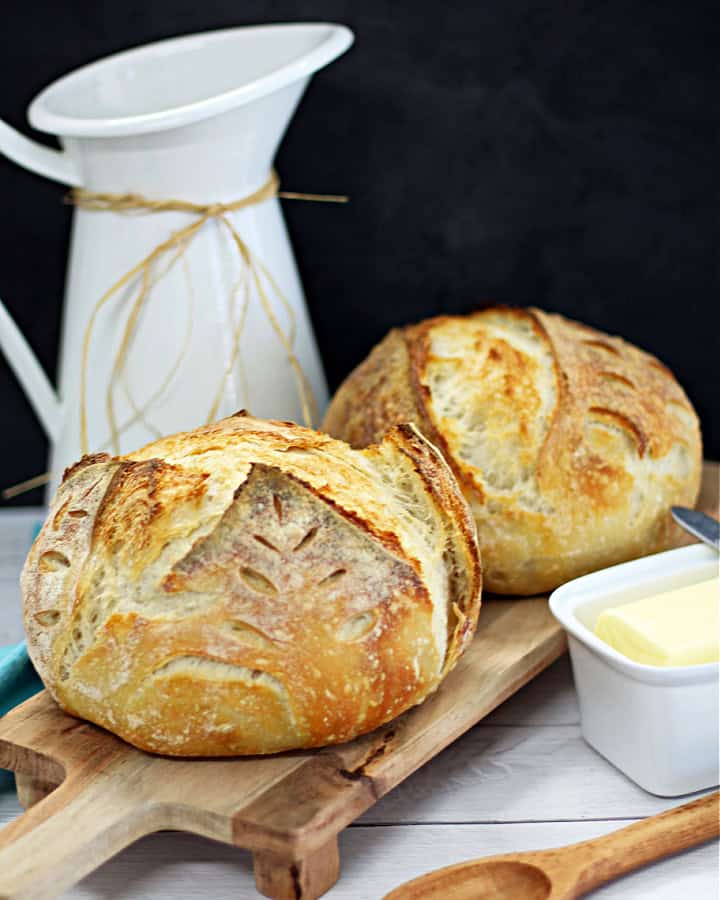
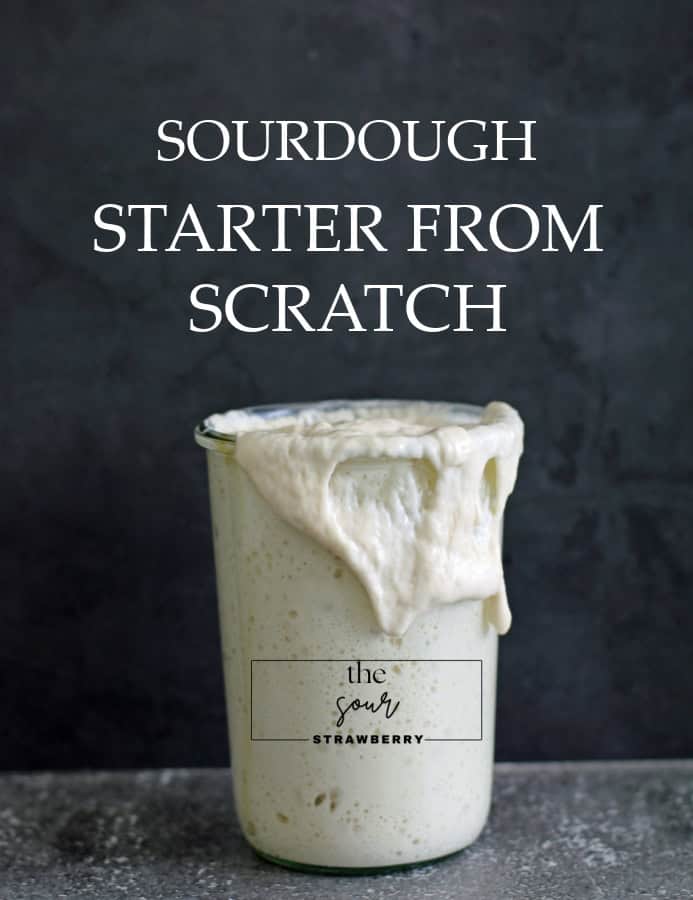
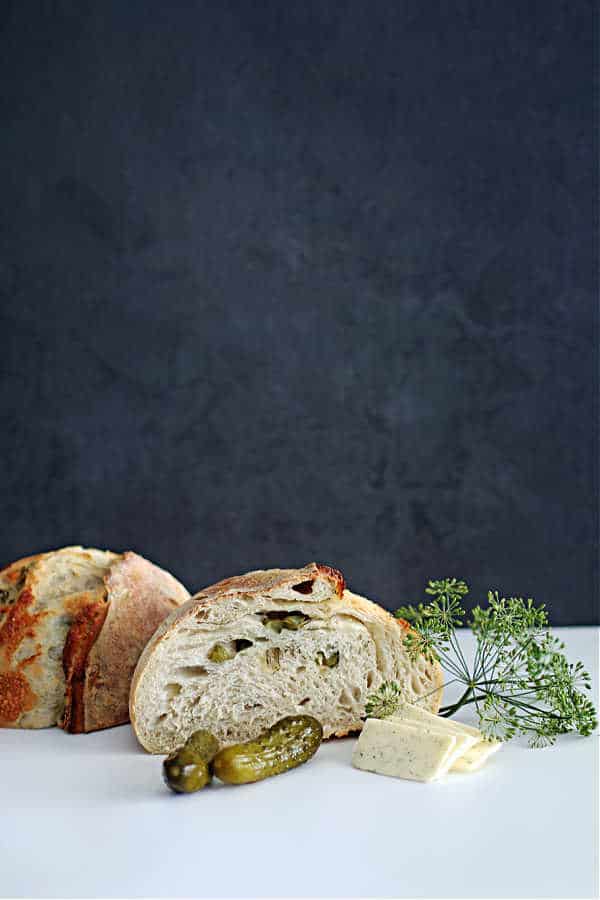
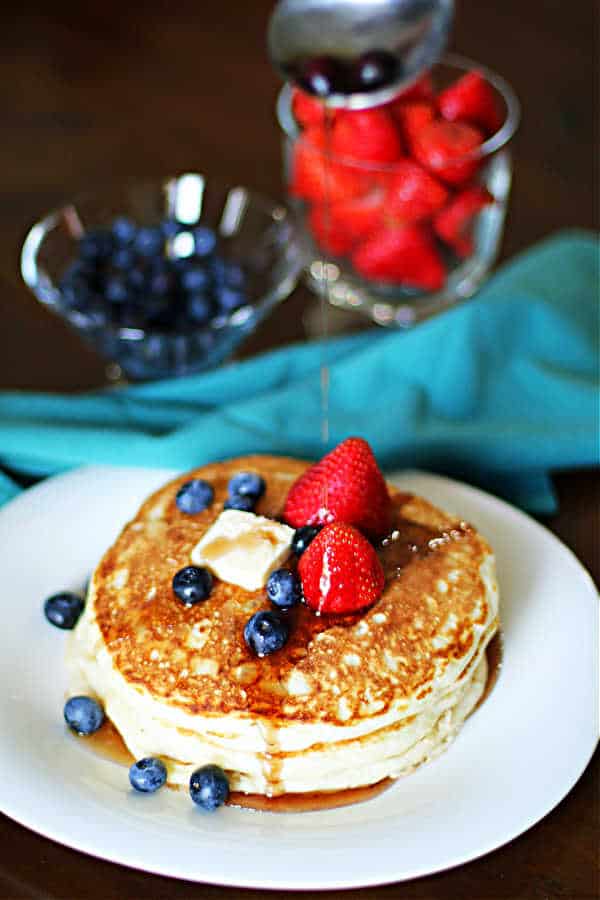
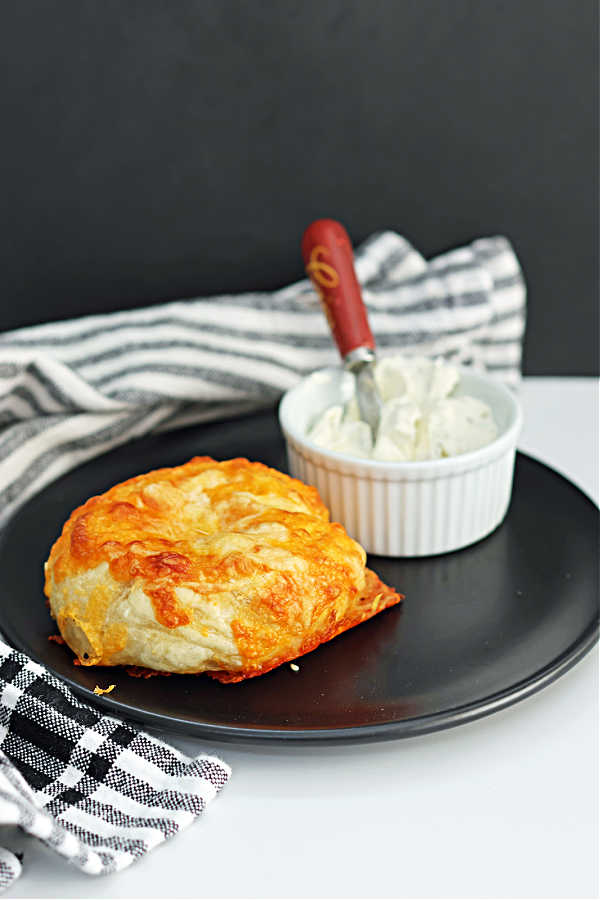
Sandi, you’ve certainly made the science/math behind hydration easy to understand and, more important, explained the ways it influences starter. Guaranteed your sourdough bakers will be delighted with your first-hand experience and knowledge. Your photos are absolutely wonderful!
~Carol
Thank you Carol. It was one of the hardest things for me to learn, I needed it dummied down, LOL….so that’s what my version is.